1950s
Mystery Illustration 41
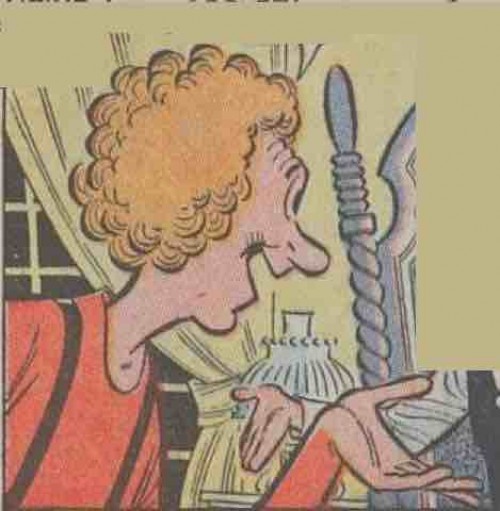
What famous film comedian is this drawing supposed to represent?
The answer is here.
And after the jump.
More in extended >>
Posted By: Paul - Sat Mar 18, 2017 -
Comments (2)
Category: Movies, Comics, 1950s, Comedians
Nullo Deodorant
Still available today.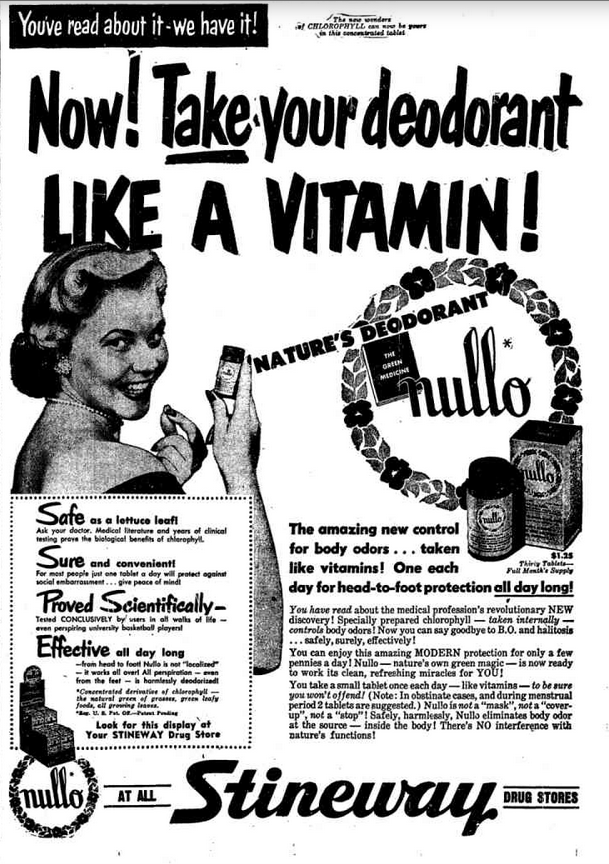

Posted By: Paul - Thu Mar 02, 2017 -
Comments (3)
Category: Body, Hygiene, 1950s
Fish Bowl Fashion
Some examples of fish bowls (with live fish) incorporated into fashion:In 1954, Kathleen Radel created fish bowl earrings containing live guppies.
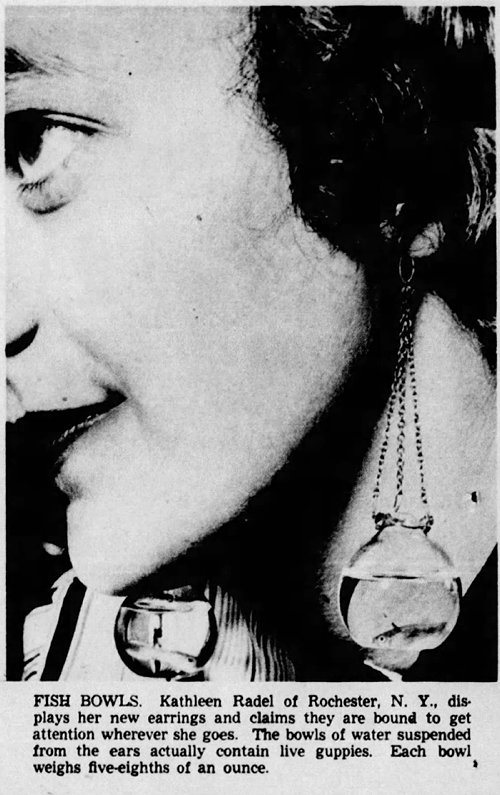
The Pittsburgh Press - Apr 4, 1954
More recently, London fashion designer Cassandra Verity Green included a goldfish handbag in her "Neptune's Daughter" collection of knitwear.

And finally, there's the Japanese artist Eijiro Miyama who's known for riding around on his bicycle wearing, among other things, fish bowl earrings that contain live goldfish.
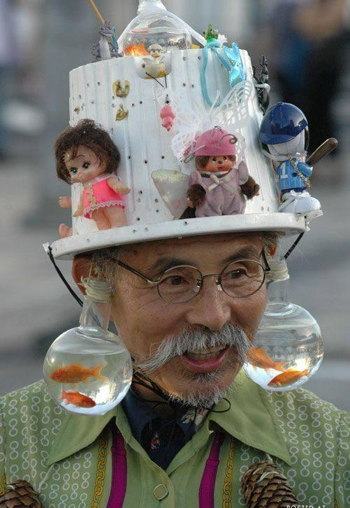
Posted By: Alex - Sun Feb 26, 2017 -
Comments (0)
Category: Fashion, Jewelry, 1950s
Death by Space Helmet
Another example of the danger of reading comic books. From July 1954:See here for a previous example.
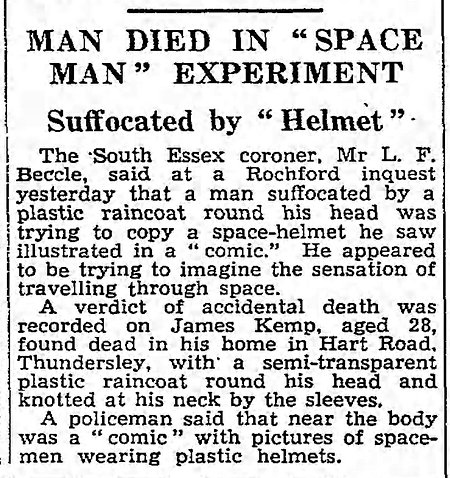
The Guardian - July 27, 1954
Perhaps the space helmet that inspired him looked something like this:
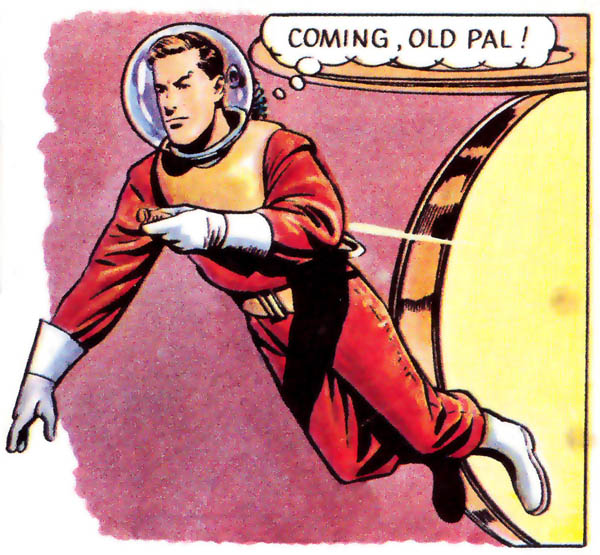
Posted By: Alex - Sat Feb 25, 2017 -
Comments (3)
Category: Death, Spaceflight, Astronautics, and Astronomy, Comics, Headgear, 1950s
Secret to a successful marriage
February 1954: J. Frank Winebrenner, wed 72 years, when asked what the secret to his successful marriage was, replied, "We did little fussin'. We said little. Mostly we just set."Looks like Frank died in March 1955 and Tressa in 1956. They're still "setting" together, saying little.
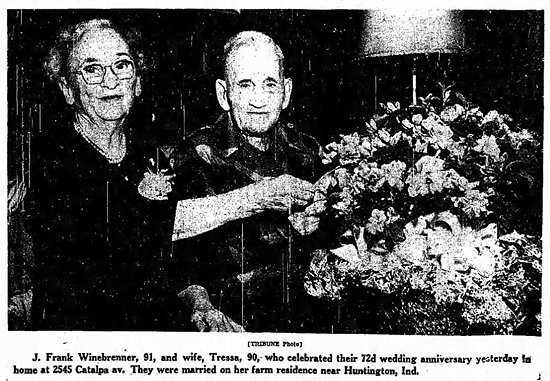
Chicago Daily Tribune - Feb 10, 1954
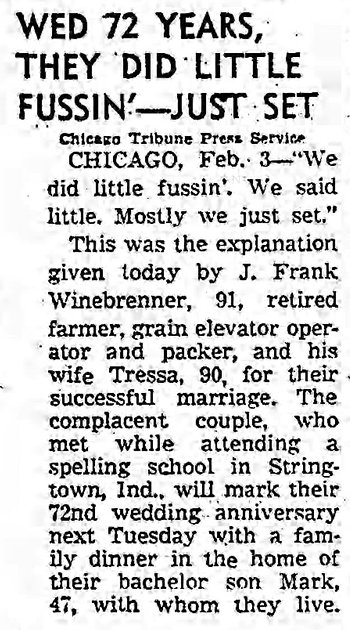
Los Angeles Times - Feb 4, 1954
Posted By: Alex - Fri Feb 24, 2017 -
Comments (2)
Category: Marriage, 1950s
Live Burros By Mail!
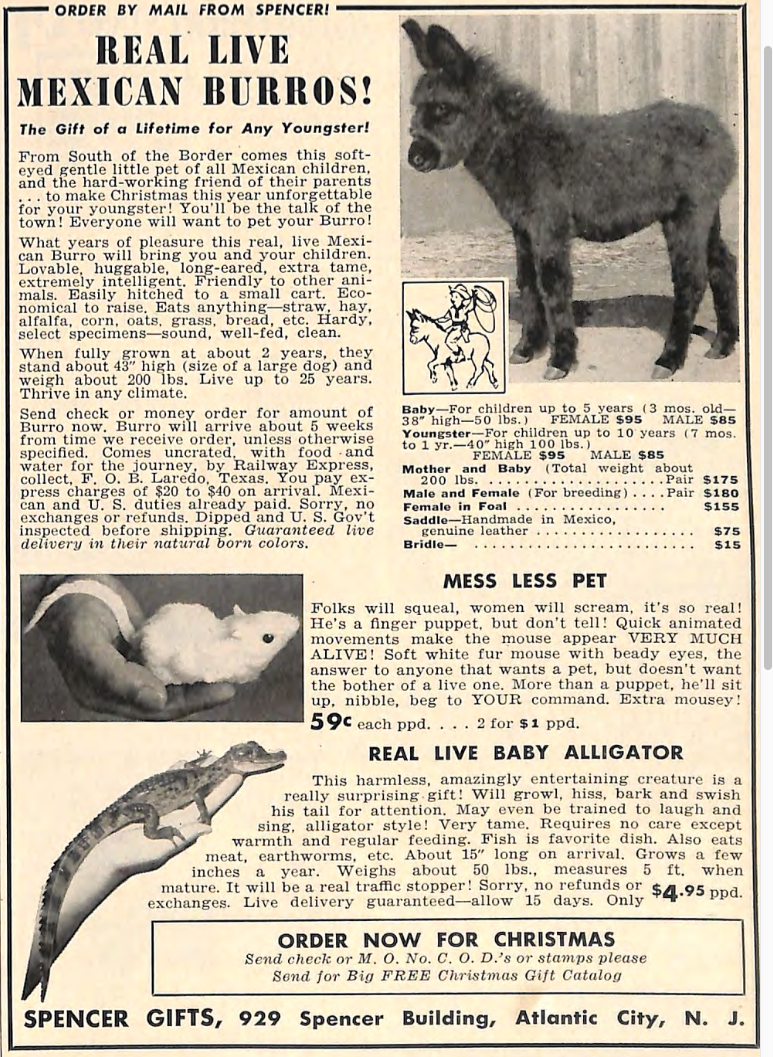
I want these at the Spencer's Gifts location in my local mall!
From THE ELKS MAGAZINE for October 1954.
Posted By: Paul - Fri Feb 24, 2017 -
Comments (2)
Category: Animals, Retailing, 1950s
Joan Ridgway, Yodeling Cowgirl
Plenty more of her on YouTube. But hardly any biographical info. What little there is seems to indicate that despite all cultural signifiers, she was Australian, not American.
Posted By: Paul - Tue Feb 21, 2017 -
Comments (6)
Category: Human Marvels, Music, 1950s, Australia, North America
Miss Photoflash
The first foto below is of the 1945 contest. Given that it was the "First Revue" of the sponsoring group, we can tentatively date it as the first such contest.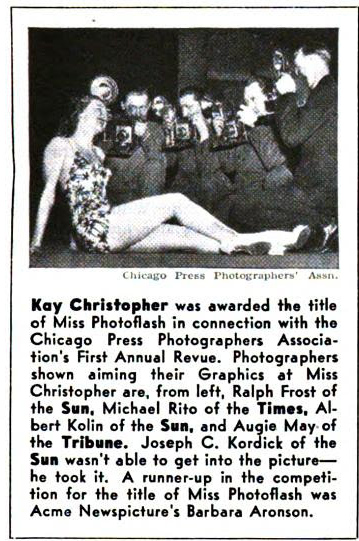
Original foto here.
The next foto is from 1968, and definitively labels the contest as being in its 24th year. Did it end then, amidst the tumult of the era?

Original foto here.
Here are the 1945 contestants again.
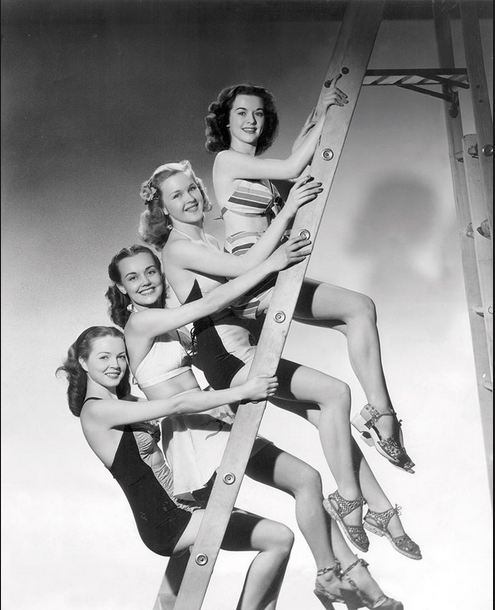
Posted By: Paul - Thu Feb 16, 2017 -
Comments (1)
Category: Beauty, Ugliness and Other Aesthetic Issues, Contests, Races and Other Competitions, Photography and Photographers, Regionalism, 1940s, 1950s, 1960s
Eye-Analyzer
In the early 1950s, Steven Warren opened the Foundation for Better Reading — a Chicago-based school that taught speed reading. One of the gadgets used in the school were these "eye-analyzers" that allowed an instructor to watch the eye movements of a student, and tell them when they were moving their eyes too much.
Newsweek - Jan 11, 1954

Chicago Daily Tribune - Apr 22, 1951
Posted By: Alex - Wed Feb 15, 2017 -
Comments (1)
Category: 1950s, Eyes and Vision
The Sky Is Your Target!
"Air Flash from the Joneses!" What if they had to deal with drones?
Posted By: Paul - Tue Feb 14, 2017 -
Comments (3)
Category: War, Civic Duties, Air Travel and Airlines, 1950s

| Who We Are |
|---|
| Alex Boese Alex is the creator and curator of the Museum of Hoaxes. He's also the author of various weird, non-fiction, science-themed books such as Elephants on Acid and Psychedelic Apes. Paul Di Filippo Paul has been paid to put weird ideas into fictional form for over thirty years, in his career as a noted science fiction writer. He has recently begun blogging on many curious topics with three fellow writers at The Inferior 4+1. Contact Us |




